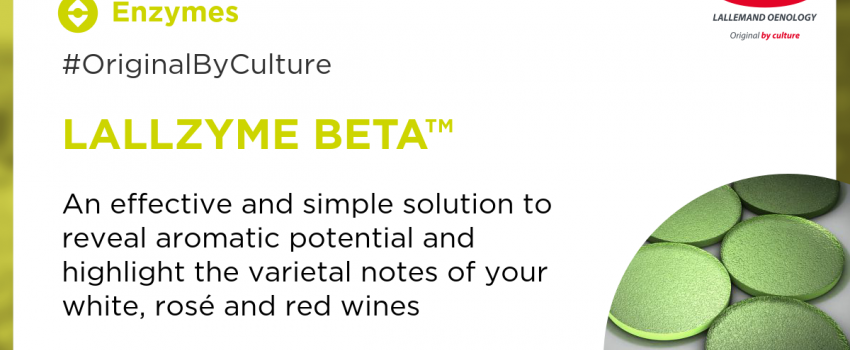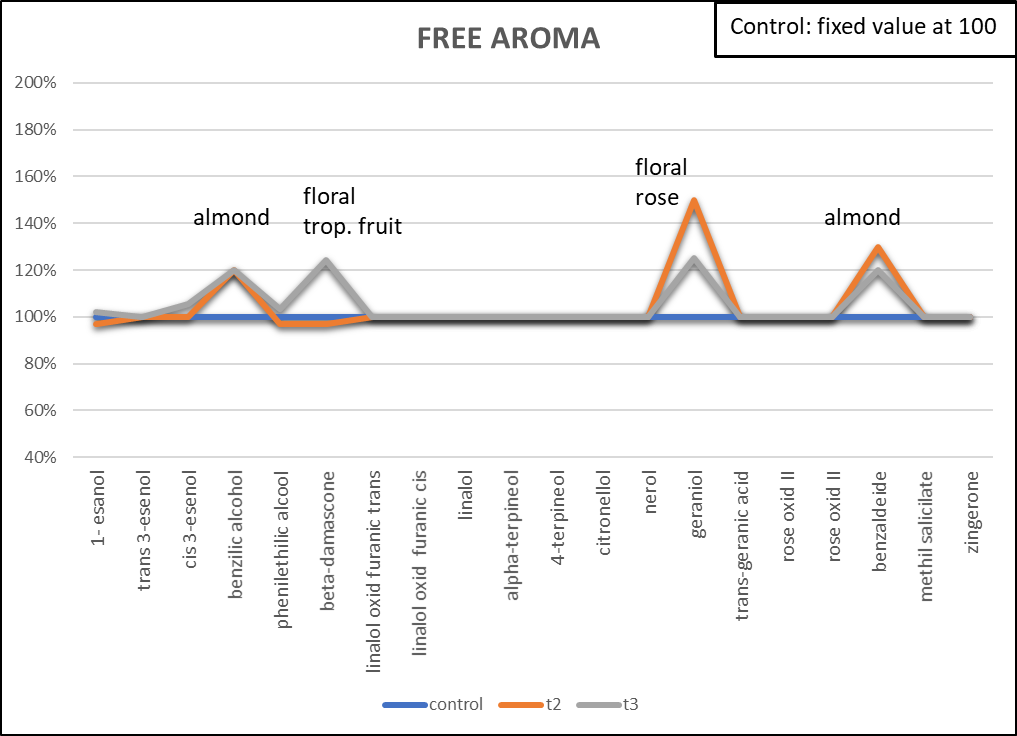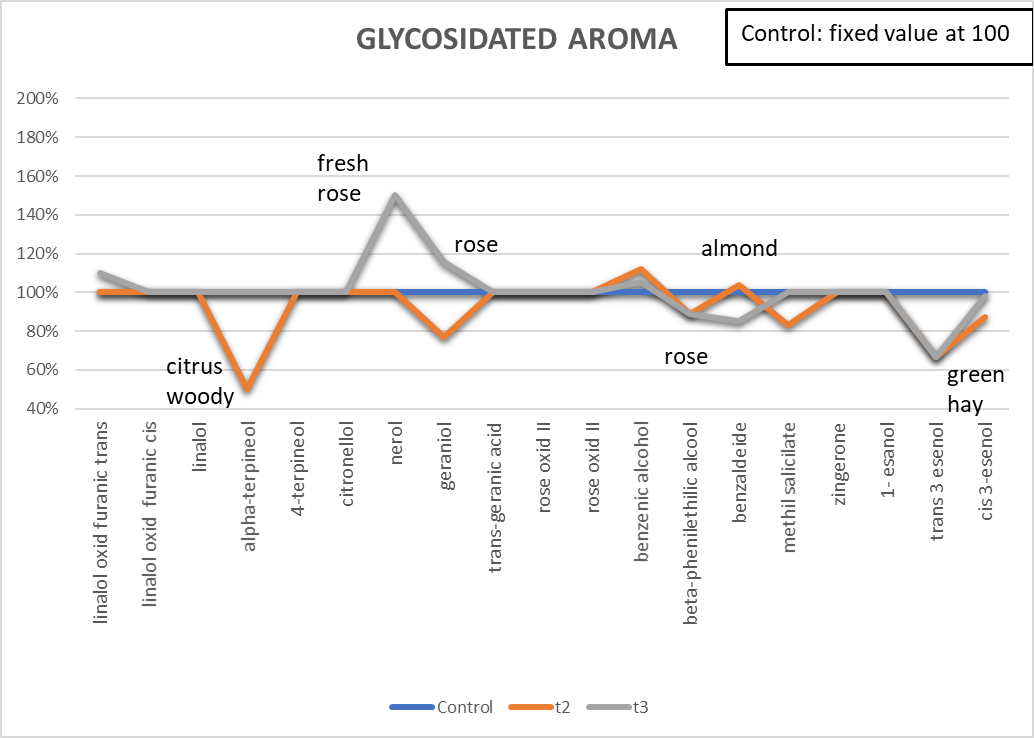
Win the treasure hunt for aromas in your wines with LALLZYME BETA™!
Publiée le 18/03/2021 10:33In wines, unexpected aromatic treasures can be hidden, which run the risk of not being properly valued. To reveal the aromatic potential of a wine and highlight the grape varietal characteristics, the use of an ad hoc enzyme can be an effective and simple solution.
Using LALLZYME BETA™ helps you win the treasure hunt for aromas in your wine!
TREASURE HUNTING FOR AROMAS IN YOUR WINE
In wines, unexpected aromatic treasures can be hidden, which run the risk of not being properly valued. Among them, terpenes and norisoprenoids are glycosidated aroma precursors, which are both very important and have a great impact on wine aroma and quality.
To reveal the aromatic potential of a wine and highlight the grape varietal characteristics, the use of an ad hoc enzyme can be an effective and simple solution.
LALLZYME BETA™ is a microgranulated enzyme preparation, obtained from Aspergillus niger.
It is a highly active and specific enzyme with a complete set of glycosidase activities, that help you give value to your wine and increase its aromatic expression, without over-expressing it. Using LALLZYME BETA™ helps you win the treasure hunt for aromas in your wine!
Added to the wine and left in contact for a few weeks (between 3 and 6 weeks), at a temperature above 12°C, it allows the release of terpenes and norisoprenoids, transforming glycosidated, inexpressive aromas into desirable volatile aromatic molecules, perceptible to the nose.
TRIAL RESULTS
In order to investigate how to enhance the organoleptic expression of wines and promote the release of varietal aromas, a trial was conducted on a Friulano wine (Italian Tocai grape variety), with LALLZYME BETA™.
A control wine was compared with three different treatments where the enzymatic preparation LALLZYME BETA™ was added at 4 g/hl; three different contact times were applied - two (t2), three (t3) and four (t4) weeks of contact time, respectively.
The initial wine was supplied by a winery located on the border between Veneto and Friuli and was taken directly from the storage tank. Here below are the chemical parameters of the wine before treatment.
From an aromatic perspective, the descriptors used for this wine were almonds, apple, pear, wildflowers, acacia, honey. However, they were very light, and the objective was to intensify them. Also, the wine showed some negative green notes (cis and trans-esenol) that we were hoping to get rid of.
The wine was put into bottles: six replicates for the control and for each of the treatments.
To stop the enzymatic activity, bentonite was added at a dosage of 10 g/hL at the end of the reaction time. A treatment with 5-10 g/hL of bentonite after the enzyme treatment is indeed strongly recommended, in order to remove the enzyme from the wine and stop its action when the best aroma expression is reached.
BLIND TASTING SESSION BY A PANEL OF EXPERTS
The wines were blind tasted by a panel of four experts. All the treatments and the control were tasted in the same session, in order to compare them.
The treatments with 2-week (t2) and 3-week (t3) contact time were the preferred ones. In both treatments, the aromas were better expressed and there were less herbaceous notes. More particularly, in t2 intense fruity notes were found, and the wine displayed good balance on the palate. In t3, hints of pear and peach stood out for their intensity with greater body and volume in the mouth. T4 was aromatic but not well balanced; the control wine was judged as a pleasant and correct wine but with less intense aromas.
AROMA ANALYSIS
The results of the tasting were confirmed by the aroma analysis as shown in the graphs below. This analysis also revealed unexpected positive impact on specific aromas like esters.


CONCLUSION
LALLZYME BETA™ is a very powerful enzyme specifically designed for rapid and very efficient action, due to its complete range of balanced activities and to its effectiveness at wine pH. The use of LALLZYME BETA™ in white, rosé and red still wines that contain varietal aroma precursors, such as terpenes and norisoprenoids, is recommended to help reveal the aromatic complexity of the wine.
To achieve best results with LALLZYME BETA™ , we recommend to use it first on a small amount of wine, to check the aroma potential of the wine and also to fine-tune the optimal contact time.
To know more about LALLZYME BETA™ : https://www.lallemandwine.com/wp-content/uploads/2021/03/Lallzyme-BETA.pdf


